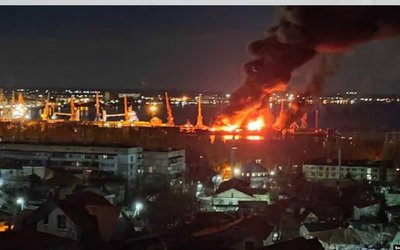
Edwin T. Atkinson is the first author who researched on the Khas people when dealing with the people of the North-Western Himalayas. His book, The Himalayan Districts of the North-Western Provinces of India, Vol II (Allahabad, North-Western Provinces and Oudh Government Press, 1884), which forms Volume XI of The Gazetteer, brings forward many important facts about the Khas people that he discovered during his research.
The book of Edwin T. Atkinson starts with a remarkable preface. It is divided into ten impressive chapters. Chapters III to VII are devoted to some key aspects of the history of the Western Himalayas. Here he talks about Khasas, Bhotiyas and other immigrants living in the hills and mountains in the background of Vaidik geography, Pauranik ethnography, mythology and the history of different periods. It includes references on the Kumaon invasion of the Gorkhalis. The next three chapters explore religions in the Western Himalayas including Kumaon's specialty in this regard. Here he tries to explain Himalayan Buddhism and Hinduism being practised by the local people.
The book maintains that the Khasas, also called Khasiyas, are the principal inhabitants of the regions to the west of Kashmir, of Kashmir itself and of the hill country as far as Nepal and of a considerable part of the plains. Explaining extensive Vedic, Pauranik and historical sources, Atkinosn speaks about their historical continuity to this day. Relying on Pliny's account, he claims that while the Khasas occupied the country far to the west of their present location in Kumaon and Nepal, the Kiratakas with the Tanganas held the country between the Tons and the Sarda.
Atkinson is clear in his opinion that the Nagas, Kiratas and Khasas entered the Western Himalayas by the same route as the Aryas. In addition, he makes a point that the Kiratas were the first to arrive in the Himalayas. The Nagas followed them. They were then followed by the Khasas. Taking the clue from Latin, Greek and Sanskrit sources, Atkinson concludes that there is a fairly connected history of the people and the country from the very earliest times. He defends his finding by arguing that the local inscriptions and the records of Nepal fill up many a gap and confirm his analysis.
The Khas people are Aryan people. They have different sub-groups. Yet they are different from other Aryans in their religious and cultural observances. Atkinson states that the name 'Khasa' like the name 'Naga' is of far too wide significance to be that of a single tribe. He also discusses in the book the question of the connection between the Khasas and Katyuri rulers in Kumaon and the Kho people and Kator rulers in Kashkara at the western end of the Himalaya beyond Kashmir. He says: "the Khasiyas of Kumaon have as much right to be called an Aryan race in its widest sense as many others with a more established name, but the fact that they have not yet come up to their plains brethren in caste and religious observances still excludes them from the ranks of the twice-born."
The Khas people have thus been described by Atkinson as one of the distinct inhabitants of the North-western provinces. Talking about the population of Kumaon and Garhwal, he describes how the inhabitants belong to the Khasa race and speak a dialect which to him sounds like Hindi. They are different not only of the Mongoloid inhabitants with him they share their land, but also from the Hindus who live in the plains. In recent years, states Atkinson, although these people have their beliefs grounded in the ideals of Hinduism, they sometimes are repugnant of its orthodox ceremonial usages.
No matter their origins, about which he is not quite clear, they have heavily been influenced by the Brahmanical priesthood. By this specification, he means the versions of Hinduism, based on four castes, and a process by which people of other Hindu caste, or tribal or other groups, change their customs, ritual ideology, and way of life in the direction of a high and frequently twice-born caste. The Khas people, notes Atkinson, are increasingly being Brahmanized, which in turn ensures the workings of orthodoxy.
Atkinson's analysis of religion in the Western Himalayas is also revealing. On the basis of the study of nearly one thousand temples, and the analysis of the forms worshipped in them, he finds that "Buddhism, though nominally dead, yet lives and is still the faith of the masses." Both Buddhism and Sivaism are being practised in the Western Himalayas. There is a strange melange at work. As Atkinson finds, "Buddhism has been absorbed by Sivaism and that both have been influenced to such a degree by the polydaemonistic cults of the aboriginal tribes as to preserve little of their original structure.
This mingling of the pre-Brahmanical, Buddhistic and Animistic conceptions has given us the existing Hinduism of the masses, and has had even a considerable influence in moulding the tenets of the more esoteric schools." The author asserts that the history of the Hindu people is laced with fiction, making it hard to distinguish between what is the truth and what is simply made up. However, he also recognizes that without these accounts from Hindu writers, it is hard to derive the history of the local people.
As Atkinson dives into the history of the Himalayas, he talks about how the Himachal was believed to be the inhabitation of the gods themselves. Many sought residence in these areas in order to be closer to the gods. More importantly, the peaks, pools, and waterfalls became the sacred places to embrace priesthood and of pilgrimage in the minds of the Hindus. Many pilgrims from all over India visit and settle in Garhwal, where there are Hindu shrines of Keddrnath and Badrinath. The intermingling of indigenous groups and Hindus from other parts of India is further seen as some of these immigrants marry daughters of princes of the hills. The Bhotiyas that occupy the inter-alpine valleys of Bhot call the people of the lower hills 'Khasiyas.' Therefore, Atkinson points out that the region makes up the diverse population together with the immigrants, the Khasiyas and the Bhotiyas.
The author also discusses how in the epic Mahabharata, the Pandavas conquered the Utsavasankatas, or the seven tribes of Dasyus that inhabited the mountains. The Dasyus were said to be the degraded members of the Aryan clan because of their lack of intercourse with Brahmans and their refusal to the Brahmanical customs and practices. During the fight, it is said that Saineya, the charioteer of Krishna, spilled the blood and cut the flesh of thousands of Dasyus.
The author claims that the Mahabharata also mentions the Bahikas called Arattas that live in contemporary Punjab. There was said to be the swelling of degraded Brahmans, also known today as the Prajapati. According to the holy book, these Brahmans had no Veda or Vedic ceremony nor sacrifice. Since they were considered to be servile, the gods apparently did not eat the food they offered. Among these shunned Brahmans of the Punjab were also the Khasas, which demonstrates that perhaps they originated in the hilly regions of Nepal from a more westerly region than Kumaon. The author also claims that orthodox writings have viewed the Khasas as “heretical members” of the Aryan family, rather than outcasts, and an important tribe of the Western Himalayas.
The first two chapters in Atkinson's book are devoted to the vertebrate and invertebrate animals in the regions. They take stock of the important species providing interesting notes on mammalian. The list of birds is attractive. There is also a compilation of the list of reptiles and land and fresh water shells. The author talks about the various kinds of animals, like the murina formosa, a yellow bat, and the frionodon pardicolor, a tiger, that live in the diverse regions of Nepal. He talks about the ailurus fulgens, a red cat bear with a distinct red colour of the head that is found in the Terai region of Nepal. He writes that the bear primarily eats ants, fruits, roots, and honey. He also mentions the Nepal hawk-eagle, limnaetus nipalensis, and the Nepal brown wood owl, syrnium newarense, which are thought to be very rare. They may make a very interesting read to zoologists of Nepal.

Dr. Bipin Adhikari
Dr Adhikari is a senior constitutional expert and the founding dean of the Kathmandu University School of Law). He can be reached at [lawyers_inc_nepal@yahoo.com]
- Belt And Road: No Belt, No Road – The Stalled Journey In Nepal
- Oct 26, 2023
- On The Belt And Road Cooperation And Partnership 'Model Agreement'
- Oct 17, 2023
- Mobilizing Resources For The University Of Nepal
- Jul 06, 2021
- Insight Into The Political Economy Of Nepal’s Development
- May 27, 2021
- Preliminary Part Of Padma Shamsher's Government Of Nepal Act, 1948
- May 04, 2020















